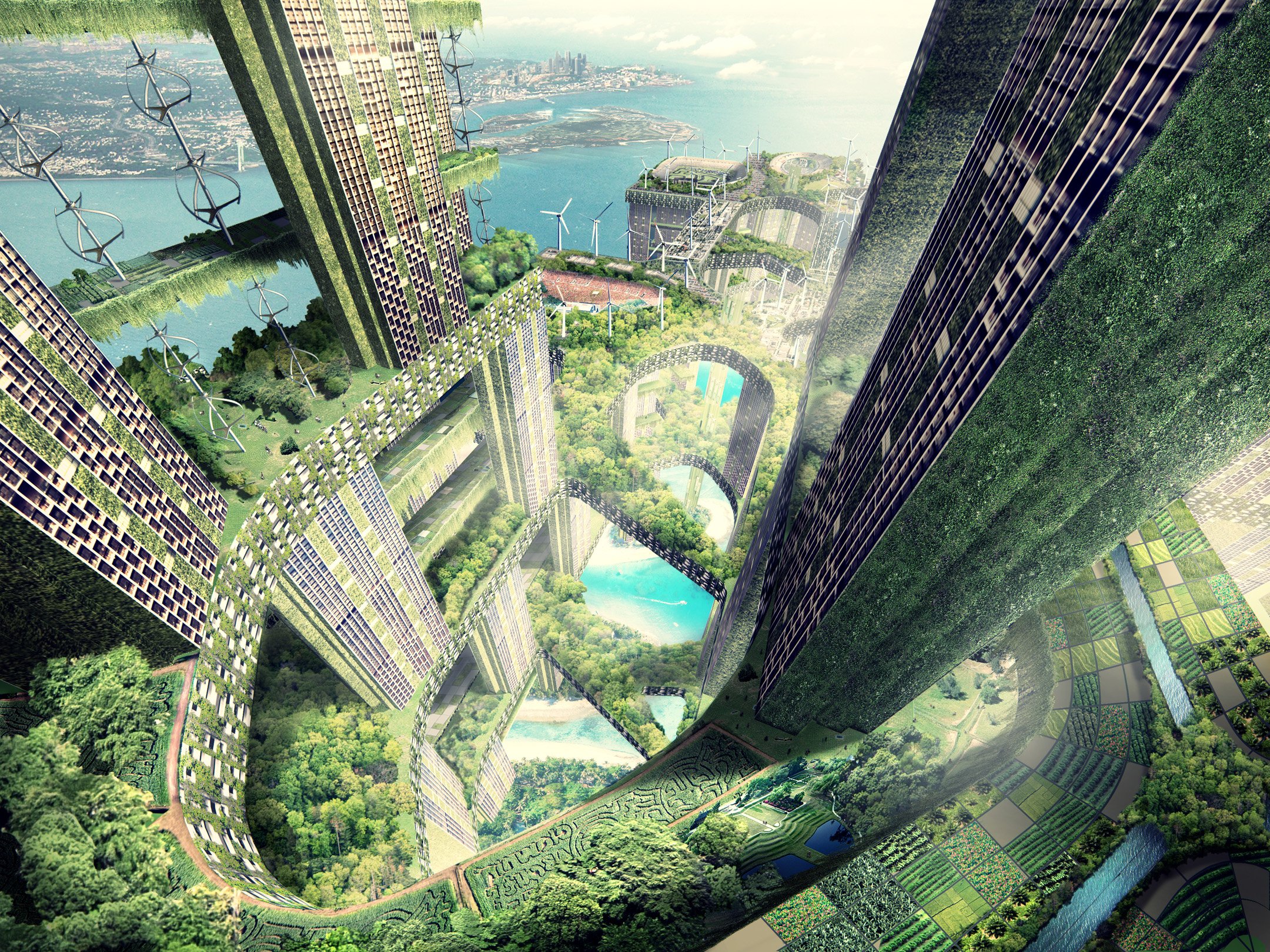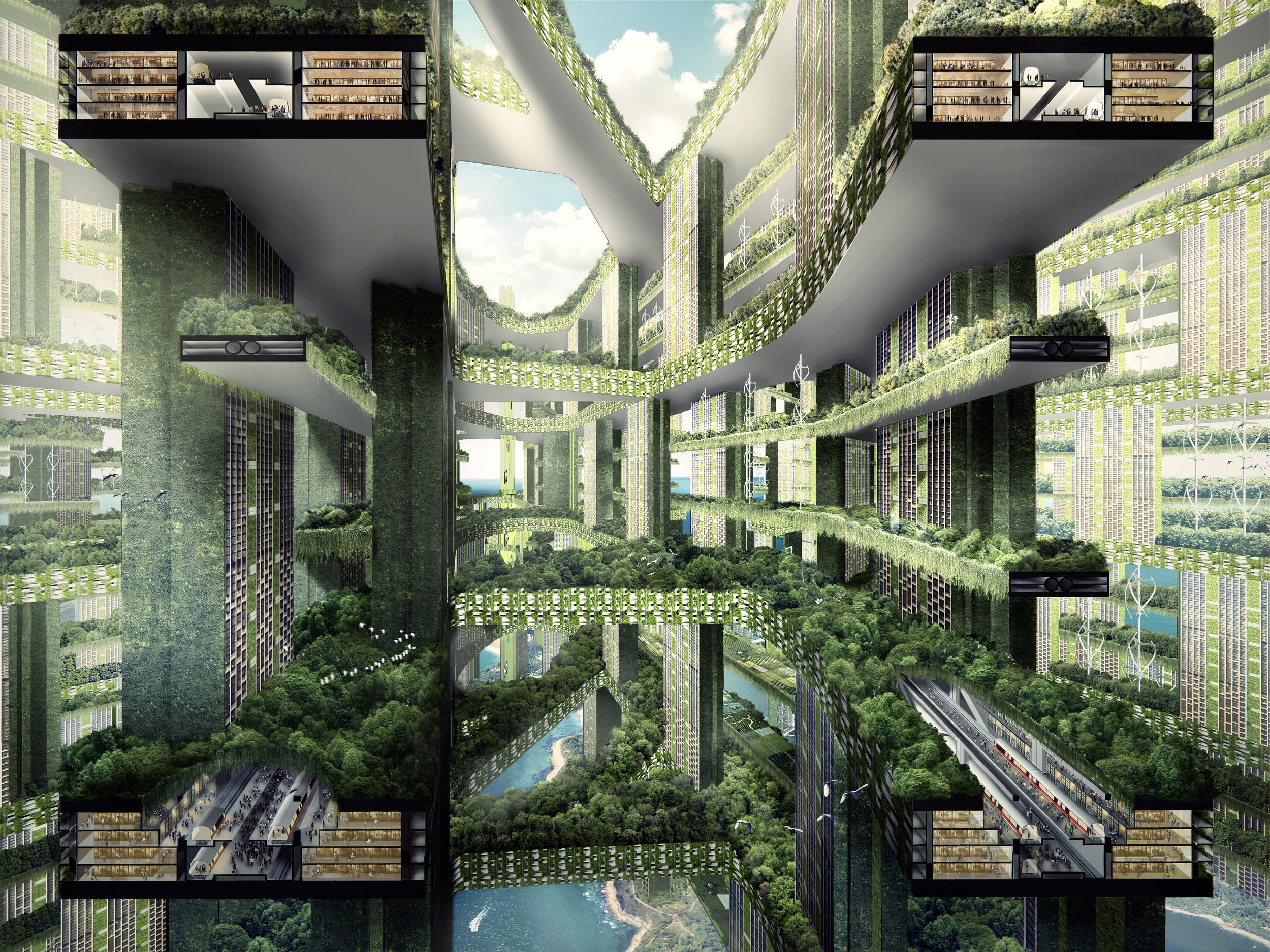Permeable Lattice City
In 2011 WOHA participated in the Vertical Cities Asia programme organised by the National University of Singapore (NUS) as a jury member for the design competition held amongst participating universities and contributed a paper discussing WOHA’s approaches in designing for high-rise, high-density living in tropical/sub-tropical regions.
Based on the competition brief that specified a population density of 100,000 people within a 1km2 site, WOHA compared the inner city centre densities of Manhattan, Hong Kong and Singapore and demonstrated that it would take the equivalent of 4 stacks of Manhattan City or 4 stacks of Hong Kong central district or 9 stacks of Singapore’s city centre to achieve a population density of 100,000 people on each 1km2 site. Within this same footprint, it would take 30 nos. of Dubai’s Burj Khalifa stacked in 3.3 tiers or 67 nos. of The Met stacked in 3 tiers to meet the live-work-play components of the brief.
By devising a 1km2 city grid with a population density of 111,111 people, WOHA envisioned a vertical “Permeable Lattice City” that uses modules of The Met as “City Columns” arranged in a staggered alignment to create a high degree of perforation and porosity resulting in cross-ventilated breezeways at city scale, ensuring fresh air and natural daylighting reaches every part of the inner city. These “City Columns” free up the real ground level for nature reserves and heavy industries, and are held together structurally by a network of “City Conduits” that serve as elevated ground levels. They are woven socially by layers of “City Community Spaces” and vertically interconnected by multi-cabin lifts and environmentally friendly people mover circulation systems that map out a fully pedestrianised city, entirely negating the need for cars above the real ground level and encouraging a highly sustainable and liveable vertical city.
This project was speculative in nature, asking the questions “How compact can a city be?” and "How dense is too dense?” - the results showed that even massive density could be liveable if key qualities - daylight, nature, air flow, space, public space, connectivity - are achieved.



